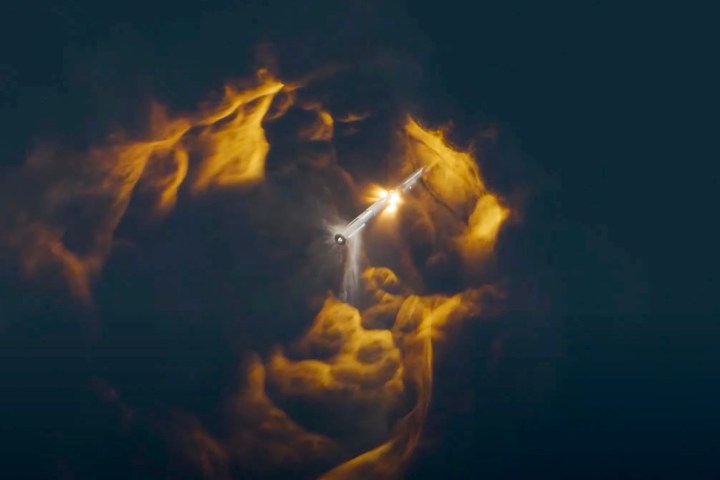
SpaceX has shared spectacular new footage of last month’s launch of the most powerful rocket ever to fly.
The cinematic content (see video below) shows the first-stage Super Heavy booster and the Starship spacecraft (collectively known as the Starship) blasting skyward in the second integrated test flight of the vehicle, which could one day carry astronauts to the moon, Mars, and beyond.
It also features close-ups of stage separation, a crucial maneuver when the upper stage Starship disconnects from the booster, as well as the explosive endings for both the booster and the spacecraft a short while later. Additional footage includes behind-the-scenes material of mission operators and SpaceX chief Elon Musk watching the mission unfold.
The Starship launched from SpaceX’s Starbase facility in Boca Chica, Texas, on November 18.
Despite the midair explosions, SpaceX considered the mission a success as the Starship achieved stage separation, an important step that it failed to complete in the first test flight of the vehicle in April.
“What we did with this second flight will provide invaluable data to continue rapidly developing Starship,” SpaceX said in comments accompanying the video.
The Starship is 395 feet tall (120 meters) and produces a colossal 17 million pounds of thrust at launch — that’s more than double that generated by the Saturn V rocket that launched the Apollo astronauts toward the moon five decades ago, and almost twice that of NASA’s new Space Launch System rocket that it tested for the first time last year in an uncrewed mission to the moon.
SpaceX is now planning for the third test flight of the Starship, which Musk said will be ready to go before the end of this year. However, the final say is in the hands of the Federal Aviation Administration (FAA), which is currently conducting an investigation into last month’s flight. Once complete, the FAA will decide on any conditions that need to be met for a launch permit to be awarded.
Editors' Recommendations
- SpaceX’s Falcon 9 rocket just completed a milestone mission
- SpaceX all set for a record-breaking rocket launch on Friday
- SpaceX shares stunning night shot of its Super Heavy booster
- SpaceX already has a date in mind for next Starship launch
- Take a high-speed ride on SpaceX’s emergency escape chute


